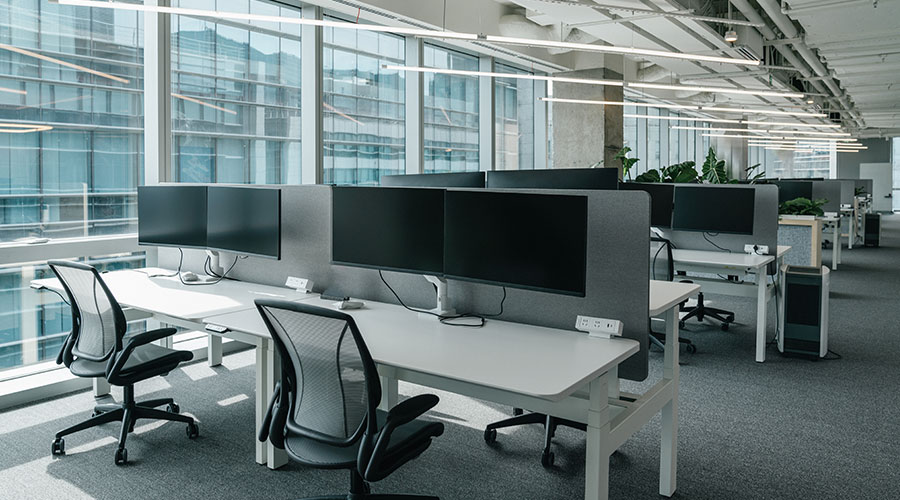To Achieve the Benefits of Daylighting, Understand the Challenges
Daylighting offers wellness and productivity benefits for building occupants. Energy savings are possible, as well, when daylighting is executed thoughtfully.
While many of us spend much of our days inside, we also know, perhaps intuitively, that sunshine streaming through the windows not only provides light, but improves our mood. Indeed, science is showing that daylight can help us work or learn.
“Light is an important part to using and experiencing a space,” says Seth Ely, senior lighting designer with Stantec. After all, he points out, humans evolved around daylight and around being connected to the outdoors and able to experience a natural 24-hour cycle. “Daylight has health benefits beyond visual acuity,” he adds.
To capture the most benefit from daylighting, appropriate controls to regulate various building elements — from lighting to HVAC and other system — are needed and should work together, says Robert Fagnant, associate partner and practice area leader with engineering design firm Syska Hennessy.
It wasn’t until about the 1960s, when fluorescent lights came on the scene and offered more powerful general lighting, that buildings began relying more on artificial light, Ely says. Between about the 1920s and 1940s, most offices used task lighting, supplemented with low-level general illumination, as well as daylight, he adds.
Now, in a sort of back-to-the-future twist, many building owners, employers, school districts, and healthcare facility executives are recognizing daylighting as an important driver in student and worker performance and satisfaction, and even in healthcare outcomes. Many are implementing daylighting systems and daylighting controls are now part of many energy codes.
Benefits of daylighting
Talk of the benefits of daylighting systems often starts with the potential energy savings. While these will vary, they can be significant. James Benya, principal illuminating engineer and lighting designer with Benya Burnett Consultancy, conducted a study for a major online retailer, assessing whether it would make sense to install skylights in its distribution centers. In the southwestern region of the U.S., the potential savings could make the investment worthwhile, due to copious amounts of daylight and high electricity rates.
The Pacific Northwest was another story, however. The generally lower electricity costs and lower daylight availability in the region reduced the potential energy savings.
Yet the calculation shifts again when employee health and wellness were considered, Benya says. While the science around the impact of daylight on morale and productivity is still emerging, the direction appears clear. “It’s the future,” he says. “When you include employee health and wellness in the study, you can’t afford not to put in as much daylight as you can.”
Daylighting challenges
At the same time, daylighting creates a few challenges. To achieve optimal results, buildings should be architecturally designed for daylighting from the beginning, Benya says. This includes their siting and shape, solar orientation, the height of each level, their roof design and their use of skylights, among other factors. For instance, in typical office buildings, useful daylight will penetrate into the space at about one to 1.5 times the height of the window. “Taller ceilings and windows to the top will light more interior space,” he says.
Another challenge is that today’s buildings use about ninety percent less energy for lighting than they consumed 40 years ago, when fluorescent, compact fluorescent and incandescent lighting were the norm. Depending on location, the annual cost per employee for lighting is now less than $50 per year, and as little as $10 to $20, Benya says.
While that’s a positive, of course, it also cuts the energy savings possible by using daylighting to reduce the amount of artificial light needed. In addition, daylighting typically conveys more solar heat than LED lights, Benya says, further changing the energy-saving calculation. “But daylighting is still very energy efficient if designed correctly, and its primary benefits are employee wellness and productivity, (which) electric lighting schemes do not generally provide,” he adds.
It’s also possible to have too much daylight, Ely notes. If it’s too bright, workers find it hard to see computer monitors. That’s especially a concern in offices in which occupants can’t choose their orientation.
Related Topics:













